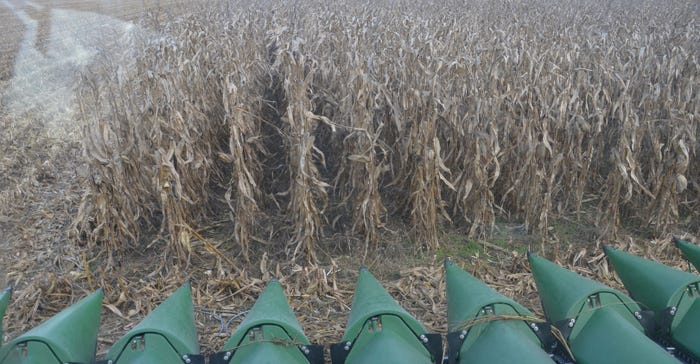
Mike Starkey faced a dilemma during last year’s wet spring. Starkey, Brownsburg, Ind., is a veteran no-tiller and cover-cropper. Near mid-May, he was looking for a field dry enough to plant. He finally found one, but there was a catch.
Annual ryegrass was still green and growing. He had a choice: He could spray it and pass on planting, or he could plant into it green and then spray. He had planted into tractor-tall cereal rye before, but not tall ryegrass.
Annual ryegrass has a reputation for being hard to kill, even when relatively small. Starkey and others with experience report no problems burning it down at that size if they follow all steps carefully. But planting into live, tall annual ryegrass — this was uncharted territory.
Make decision
This practice is not for the faint of heart — or first-time cover crop users. “I wanted to get corn planted, and I was confident we could burn [ryegrass] down if we did things right, so we planted,” Starkey recalls.
His nephew and partner, Jeff Starkey, ran the planter. “The ryegrass was still damp for the first hour, and we had a few issues getting through it,” Jeff says. “Once it dried off, we planted through it without problems. It was a new planter decked out with everything we need for placing seed properly, and that probably helped.”
Starkey sprayed soon after the corn was planted. “Having our own sprayer factored into the decision,” he says. “You need to spray when conditions are right.”
He started spraying after lunch, an optimum time for spraying cover crops. He applied 26 ounces per acre of PowerMax as the glyphosate source, plus 12 ounces per acre of E-99 brand 2,4-D.
Starkey believes the most important thing was adding Citron, a citric acid product that conditions water and gets the pH right. “Our water needs conditioning, and we use it if the label allows it,” he says. “We believe it’s a big reason why we get consistent results.”
Yield results
Yield monitors don’t lie when properly calibrated. In the fall, as Starkey moved through the field where he planted corn into live annual ryegrass, yields were consistently above 200 bushels per acre.
As for signs of annual ryegrass? There was virtually no ryegrass or weeds in the field, Starkey says. “Once in a while when I headed into the next set of rows, there were a few sprigs of ryegrass,” he says.
“Those were there just so we could prove that it actually was in annual ryegrass when we planted,” he quips, smiling.
Starkey shares what he learned from the experience. “You must do things right when you’re spraying,” he says. “You also have to consider weather conditions. The warmer weather of May was in our favor. When it’s warmer and ryegrass is actively growing, it’s easier to kill.”
He also believes the field benefited from allowing ryegrass to grow that long in the spring. That’s when you reap benefits, he says.
Will he try it again? That remains to be seen, but don’t bet against it.
To see pictures of Starkey’s experience, check out the slideshow below.
About the Author(s)
You May Also Like




